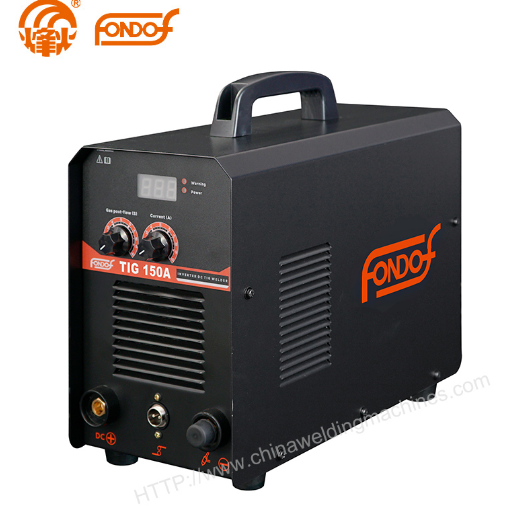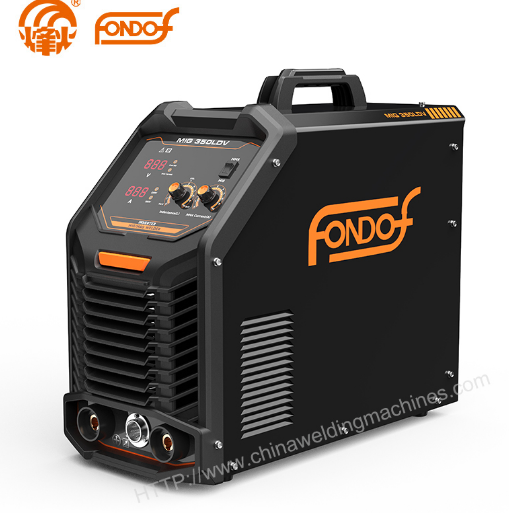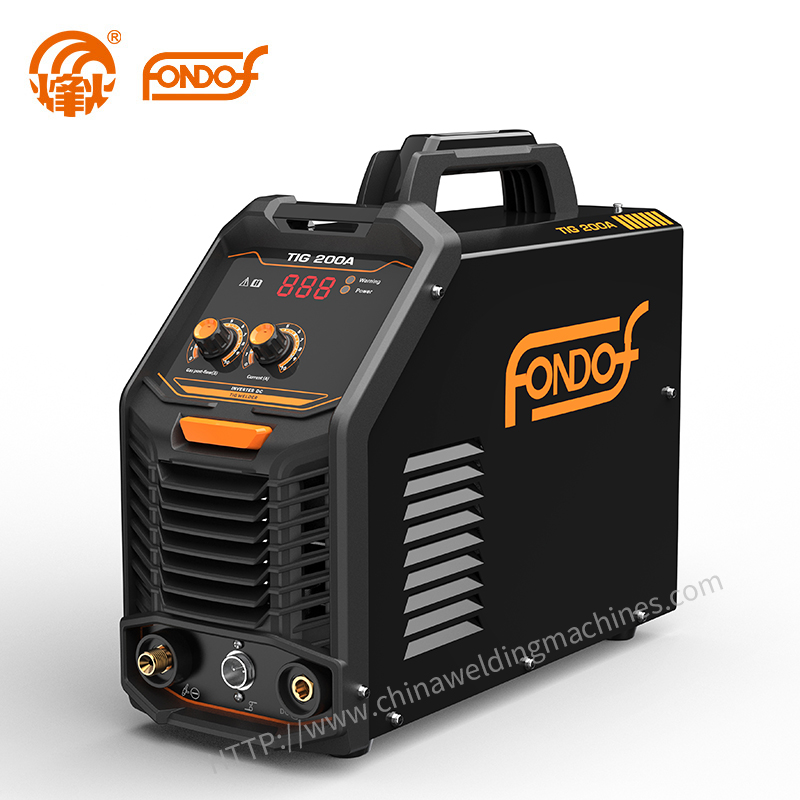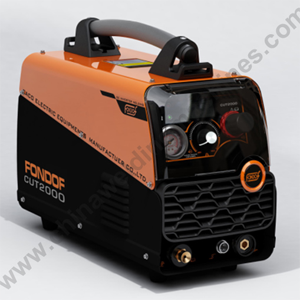Guide To Aluminium Welding: What Is The Best Welding Method?
 Jan. 12, 2024
Jan. 12, 2024
As one of the most prevalent types of metal, it might surprise you to learn that welding aluminum is not particularly straightforward. Aluminum, being a softer metal with a narrower welding window, poses challenges in the welding process, making it more demanding to handle. This characteristic makes aluminum more susceptible to being blown out during welding, resulting in weaker welds. So, is there a viable method for welding this metal?
Tungsten Inert Gas welding, or Gas Tungsten Arc Welding, stands out as the safest and most efficient approach for welding aluminum. While it is feasible to weld with a MIG welder, this is only suitable for unusually thick sheets of aluminum, as MIG welders are designed primarily for thicker metal sheets.
A considerable number of individuals may not even be aware that welding aluminum is possible. Therefore, we have compiled a brief guide to provide insights into welding aluminum, covering aspects such as the metal's properties, safety precautions, and various welding processes.
Can You Weld Aluminium?
Yes. Aluminium can be welded by using a TIG welder, a GTAW welder, or a specifically low powered MIG welder. It takes specialised welding professionals with the right equipment to safely weld this metal without damaging it.
Aluminium is inherently difficult to weld due to its nature — soft, highly sensitive, and insulated by a tough oxidised layer. This difficulty is exacerbated by the fact that aluminium is very susceptible to impurities when in its molten state, which may result in weak or porous welds.
Aluminium and its related alloys have an affinity for Oxygen. Pure Aluminium melts at 1,200°F (650°C), while the oxide that protects it melts at 3,700°F (2,037°C). Since the oxide's melting point is much higher than the aluminium itself, the oxidised layer has to be removed prior to welding.
Aluminium's higher thermal conductivity and low melting point gives it a slim window of workability compared to other metals which are easy to weld, like various types of steel.
Is Welding Aluminium Difficult?
Welding aluminium is difficult because it has a low melting point and is highly thermally conductive. This means that it takes a smaller amount of heat and a shorter time to melt and potentially damage the metal. This is why only professionals should attempt to weld aluminium.
This is also the reason aluminium is difficult to laser engrave correctly. While it can be etched, as well as laser cut and welded, aluminium fabrication requires specialist experience to carry out correctly.
Although aluminium is an incredibly versatile metal found everywhere in our lives, it's not as easy to work with as you would think, especially when it comes to welding. It's incredibly easy for aluminium to be overheated with the average welder, and shouldn't be attempted at home for not only your own personal safety, but for the safety of the piece you are working on.
MIG/MAG Welding Machines / MIG Welder
Is Aluminium Safe To Weld?
Aluminium is safe to weld for trained professionals provided that individuals in the vicinity of the welding process are wearing Personal Protective Equipment (PPE) and are using fume extraction torches alongside fume extraction systems to reduce the amount of particles that can be inhaled by up to 95%.
Arc welding aluminium produces gas and particles, which in this context, are collectively referred to as welding fumes. When welding this metal, it produces Aluminium Oxide in the form of particles, which range in size — from 10 to 400 nanometers. The size of these particles will determine how far into the system they can go when inhaled, and whether they can penetrate the alveoli in the lungs and accumulate.
Excessive inhalation of Aluminium Oxide may lead to respiratory and lung diseases, usually in the form of Bronchitis. The welding process also produces what is called the gas ozone, which is created when the arc from the welder produces UV radiation. Although MIG and TIG welding produces less fumes, it produces more gas ozone than MAG welding.
What Type of Welder Can Weld Aluminium?
A TIG and GTAW welder can reliably weld aluminium; a MIG welder can also weld aluminium, but it's far less reliable. Any other type of welder risks damaging the surface of the aluminium you are welding, and the splattering could come in contact with the person welding.
TIG Welding, also known as Gas Tungsten Arc Welding (GTAW) involves a Tungsten electrode that runs a current through the metals you want to join. On the other hand, MIG Welding involves feeding a metal wire connected to an electrode that melds the materials together.
During the welding process, both TIG and MIG torches produce an electric arc between the material and the electrode. The metal is melted this way and allows the filler material to combine with it. Nowadays, it is much more common to see TIG welding for aluminium than MIG welding.
Plasma welding with direct current is another type of welder that can weld aluminium and is considered advantageous with regard to the fact that heat can be directly introduced into the workpiece, but it's a very challenging process.
MIG Welding for Aluminium
MIG welding is one of the two most common types of welding currently found today, but it's not ideal for aluminium. MIG welders operate at high temperatures and work very quickly, which makes it a great fabrication tool, but not if you're working with aluminium.
That being said, a MIG welder modified to work slowly at low temperatures, specialised for aluminium, can be used in a pinch where TIG welders aren't available.
Pros of MIG Welding for Aluminium
Benefits of MIG welding include:
Less Time to Weld – welds are created in a shorter amount of time.
Lower Cost – Not as expensive as TIG welding, and equipment is much more accessible.
Accuracy – Much easier to get an accurate bond compared to TIG welding.
Clean Process – The process is clean and is therefore good for the environment.
Cons of MIG Welding for Aluminium
Although MIG welding is incredibly common, it's not a universal answer for welding applications. Some of the negatives of MIG welding include:
Cools Quickly – MIG welder welds cool much faster than those of other welders. This can be an issue if you are wanting to make correct mistakes.
Weld Orientation – Because of the way a MIG welding machine works, it's essentially impossible to weld something upside down or vertical. This makes welding larger structures that cannot easily be rotated difficult.
Immobile – MIG welders are largely immobile and use a shielding gas that can easily be interfered with by the wind. For this reason, they are only found in metal fabrication workshops.
TIG Welding for Aluminium
Of all the different welding methods used today, TIG welding is often the most used for welding aluminium. Because TIG welders usually operate at a slower speed at lower temperatures, it gives a trained welding specialist time to work with the very thin metal and reduce damage to the surfaces being welded.
Pros of TIG Welding for Aluminium
Benefits of using TIG welding for aluminium include:
Precision – Welds from TIG are much more precise, and generally have a higher quality than MIG welds.
Clean Process – The process is clean and is therefore good for the environment.
No Filler Required – TIG welding does not need filler material.
Greater Control – Allows for foot control to adjust heat input accordingly.
Lower Maintenance – Does not consume the welding electrode unlike TIG welds. In addition, the electrodes do not need much upkeep aside from routine cleaning after every use.
Cons of TIG Welding for Aluminium
TIG welding isn't perfect for every scenario. Downsides of TIG welding include:
Cleanliness – Although TIG welding is a very clean process, it needs to be clean to work properly. Dirty or smudged materials can significantly affect the quality of the weld.
Costly – On average, TIG welders and components are more expensive than other types of welders.
Speed – Although you have greater control with a TIG welder.
Difficulty – TIG welding is harder to perform than other types of welds, and requires much more practice to do proficiently.
What Is The Cheapest Way to Weld Aluminium?
MIG welding is the cheaper option to weld aluminium, though the quality and strength of the join is not as good. TIG welding is slower and therefore costs more, but the results are superior for joining aluminium.
Stick welding is typically the cheapest way to weld metal, but not recommended for aluminium, since it uses a flux. This can result in porosity of the final product and compromise metal strength considerably.
Stick welding, also known as Shielded Metal Arc Welding (SMAW) is one of the most cost-efficient types of welding, going all the way back to the late 1880s. Although it is common for beginners and enthusiasts alike due to its affordability, using the process for welding aluminium is known to be extremely messy, which leads to molten splatter.






























